Art Beat: It's all a little mad, mythological, at Dana Sherwood's 'Some Kind of Tea Party'
Artist Dana Sherwood’s exhibition “Some Kind of Tea Party or Thereabouts in the Realm of Madness” ain’t your grandma’s tea party. There is nothing dainty or reserved about it. And it doesn’t truly enter a realm of madness but it certainly flirts with the possibility.
One of the central works of the show is “Queen of Cups,” a site-specific installation, commissioned by UMass Dartmouth, in which members of the community were invited to make porcelain teaware under Sherwood’s tutelage.
Nearly a hundred people became participants (and effectively, co-exhibitors) by creating cups and saucers in a variety of sizes and shapes, drawing, painting and glazing the surfaces. They are displayed on a large banquet table, crowded with dried flowers, apples and at least one pumpkin.
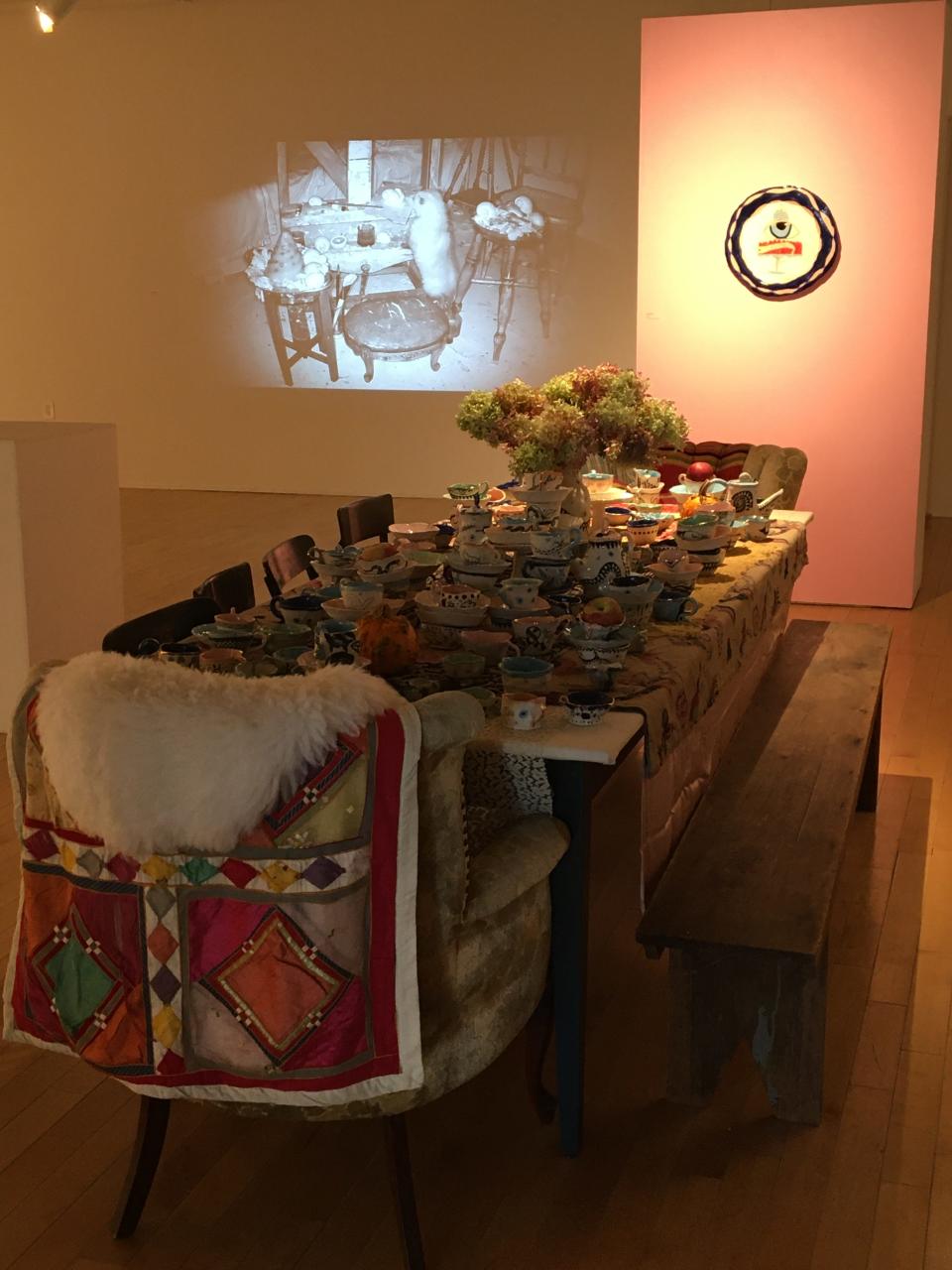
“Queen of Cups” anchors the show, with its unsubtle Alice in Wonderland nods, which resonates throughout much of the rest of the displayed work. Sherwood casts a large net and hauls in an intriguing myriad of references to mythology, fairy tales and post-apocalyptic pop culture visions of a future without humans.
Two videos are projected on the gallery walls. “Feral Cakes” (11 minutes, 22 seconds) is a fascinating nocturnal look at raccoons, possums, cats and other animals devouring fancy cakes, sculpted gelatin molds, raw meat and grapes (put out in the woods by the artist) and captured on surveillance tape.
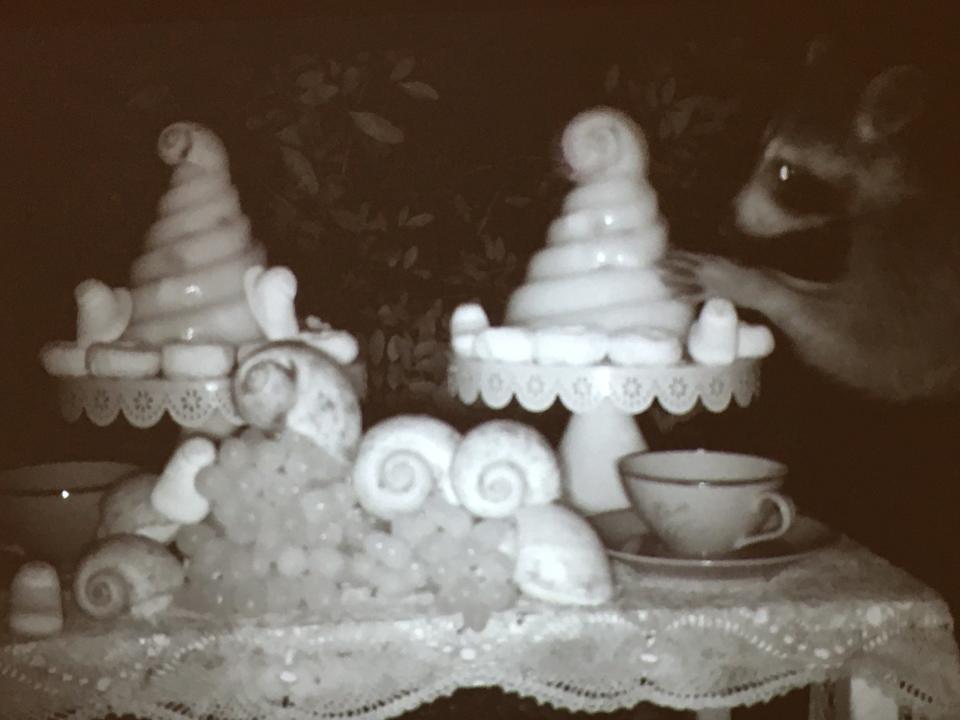
Similarly, in “Bedroom Bestiary” (18 minutes, 29 seconds), mammals, birds and insects descend upon Sherwood’s beautifully arranged banquets, this time in an abandoned boudoir. It blurs the distinction between civilization and nature by making the unwitting creatures her collaborators. With their appetites sated, they would certainly happily return for a sequel.
With their eyes aglow under night vision surveillance and with the startling clamor of falling dishes, the possums and squirrels and their dining companions are far from the cutesy woodlands critters that frolic with Snow White, Cinderella and the rest of the Disney princesses.
With her videos, Sherwood obliterates the line between culture and nature, between order and chaos, and between the domestic and the wild.
Displayed on a Pepto-Bismol pink column, there is “Eat Me,” a roundish ceramic platter. On it, there is a depiction of a snail atop a large human eye, itself on top of a cake display case. Within it are bright red foodstuffs of some sort. They could be Hostess Red Zingers or sausage links. It doesn’t really matter. And there is a ribbon that reads “Eat Me.”
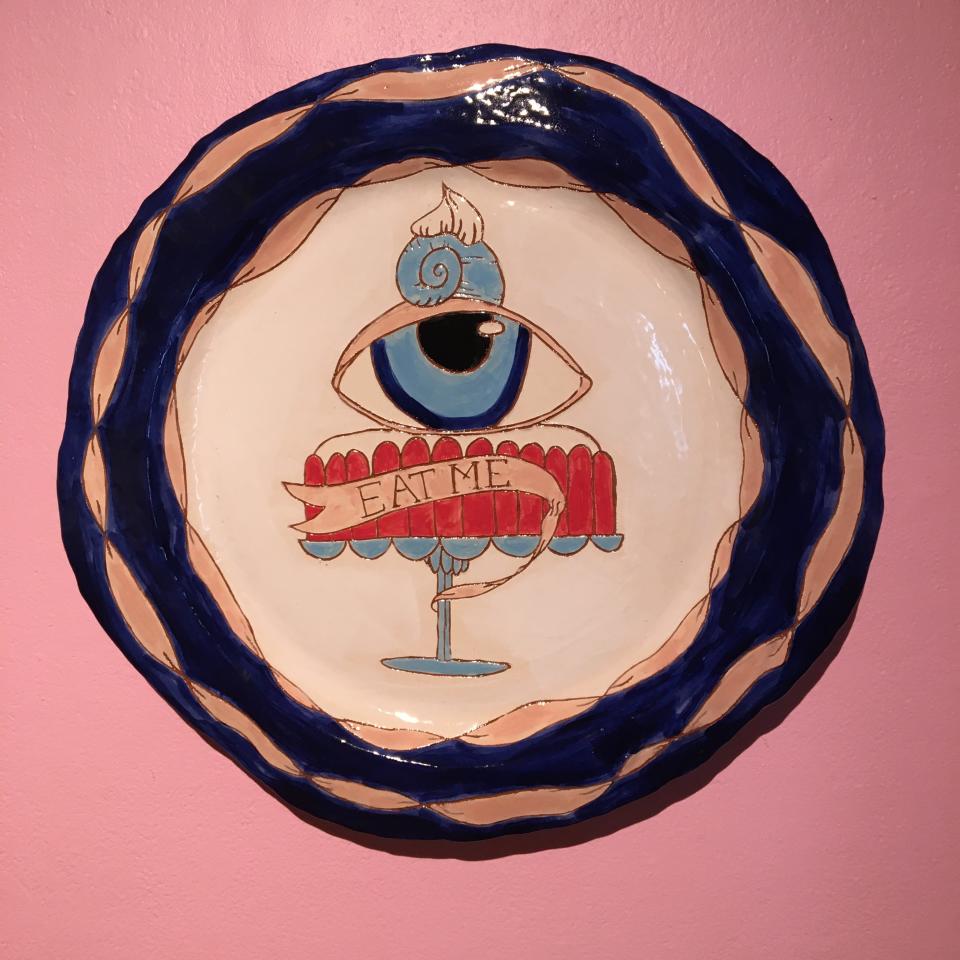
“Eat Me” is a clear reference to "Alice in Wonderland," the message on a cake that led to the girl growing into a giant, before drinking a cup of tea that made her shrink, and then being able to attend the Mad Hatter’s Tea Party.
That phrase also appears on “Inside the Belly of the Snake,” a terra cotta vase on which a white snake wraps around its curved surface. A naked woman lies on her back with food resting on her stomach and her thighs.
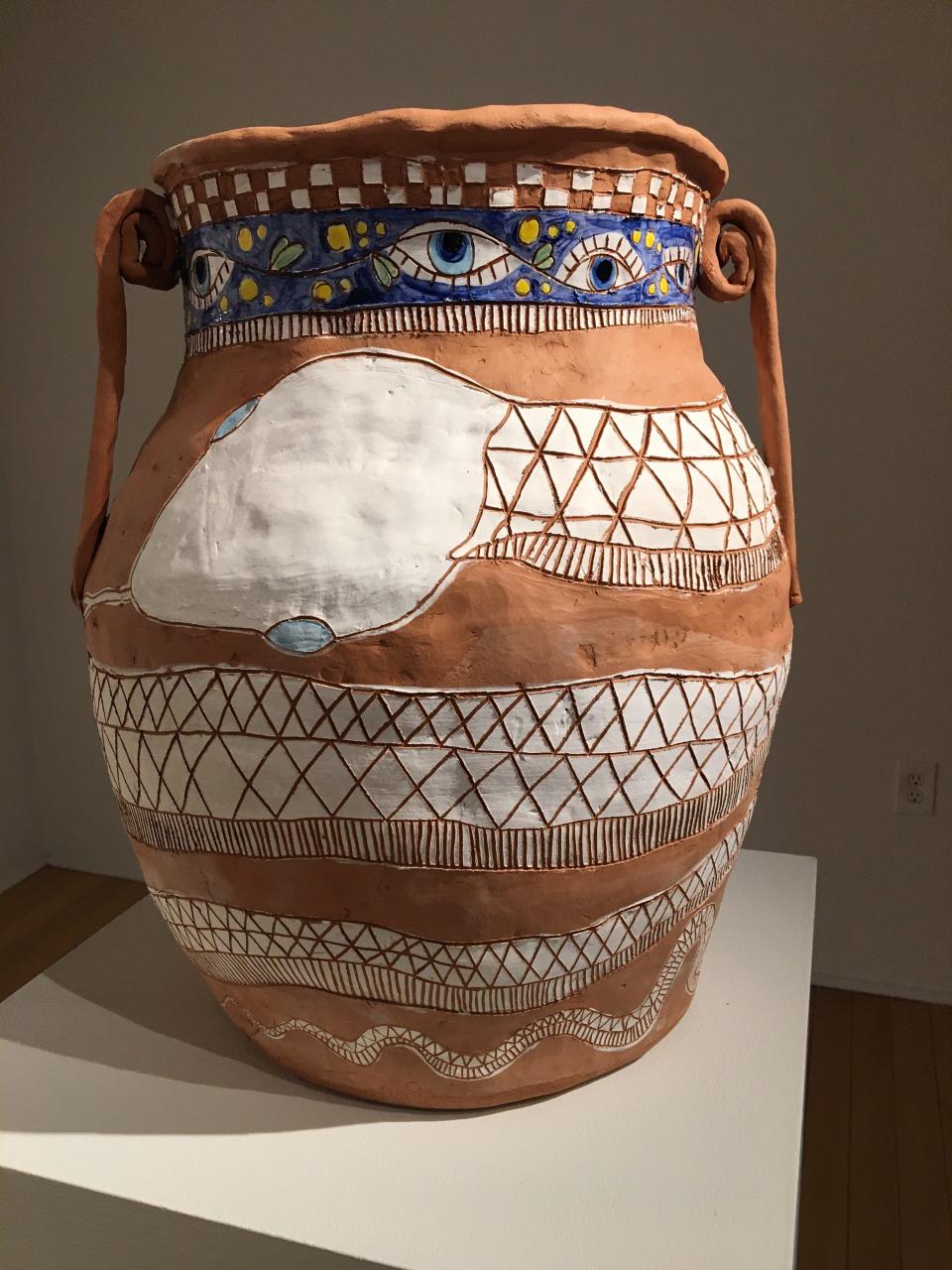
Throughout much of Sherwood’s work, woman or animal-woman hybrids are depicted within the bellies of various animals including a snail, an albino rabbit and a mythical sea goat. The words “eat me” sometimes appears and sometimes does not.
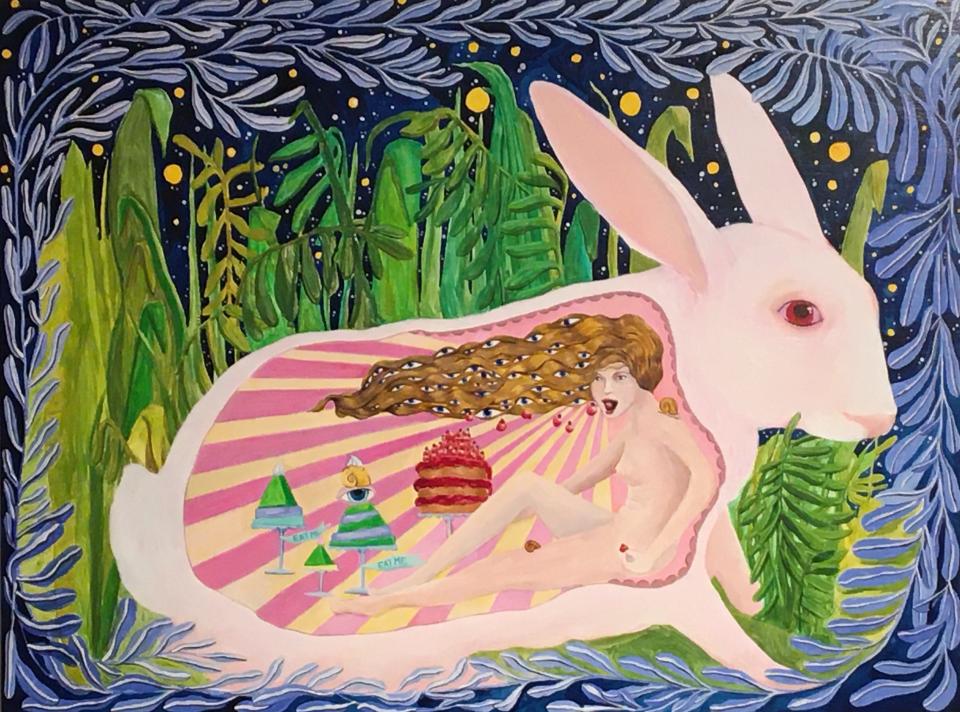
Sherwood taps into certain sensibilities, if not the actual tales of world mythologies, including those of ancient Greece and Babylonia.
“Inside the Belly of the Octopus” is a ceramic platter depicting a mermaid inside an octopus. She offers sweet treats. While not a direct reference, it is reminiscent of the Japanese artist Katsushika Hokusai’s 1814 woodcut print “The Dream of the Fisherman’s Wife,” in which an octopus and the wife of the fisherman are engaged in a particular sexual act.
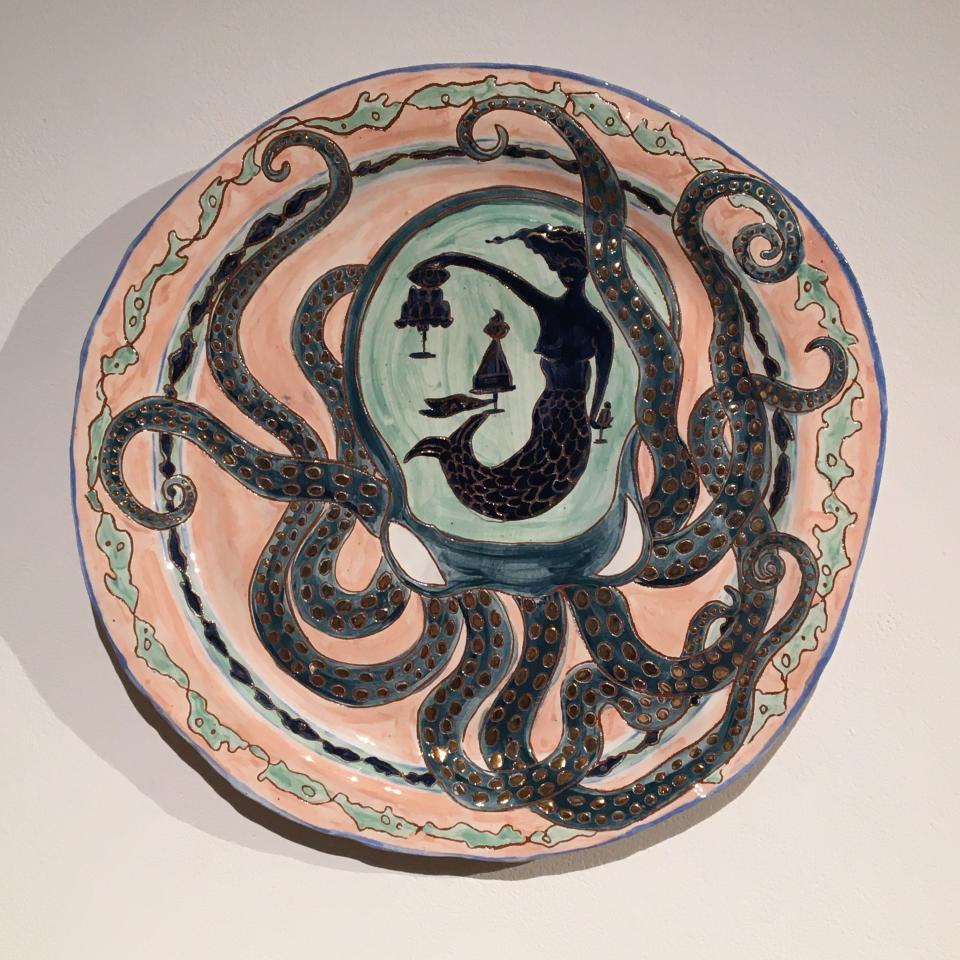
A version of that work of art became a significant element in one of the final episodes of “Mad Men,” in which Peggy Olson (portrayed by Elisabeth Moss), who started out the series as an ingenue and who, with determination and tenacity, became a confident woman unafraid to speak up for herself.
Walking through the halls of the advertising agency, Peggy carries “The Dream of the Fisherman’s Wife” and effectively becomes a symbol of female empowerment and imagination. In the end, Peggy isn’t that much different from Alice.
In her exhibition, Sherwood challenges the viewer to consider much, including what exists between the civility of a tea party and the otherness of the thereabouts.
“Dana Sherwood: Some Kind of Tea Party or Thereabouts in the Realm of Madness” is on display at the University Art Gallery at the Star Store Campus, College of Visual and Performing Arts, UMass Dartmouth, 715 Purchase St., New Bedford, until Dec. 28.
This article originally appeared on The Herald News: Art Beat: "Some Kind of Tea Party of Thereabouts in the Realm of Madness"

